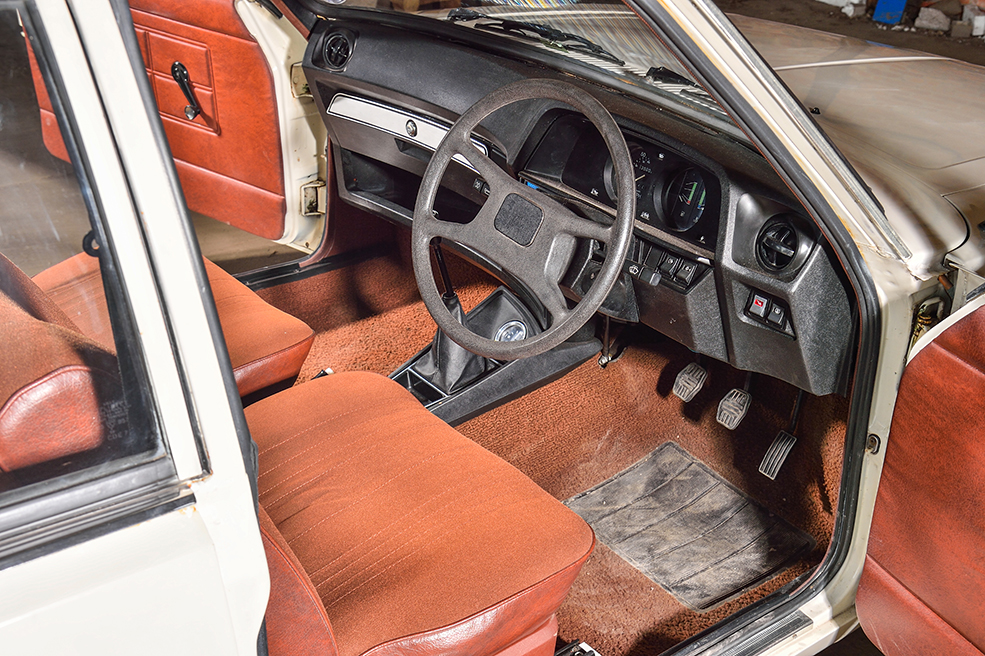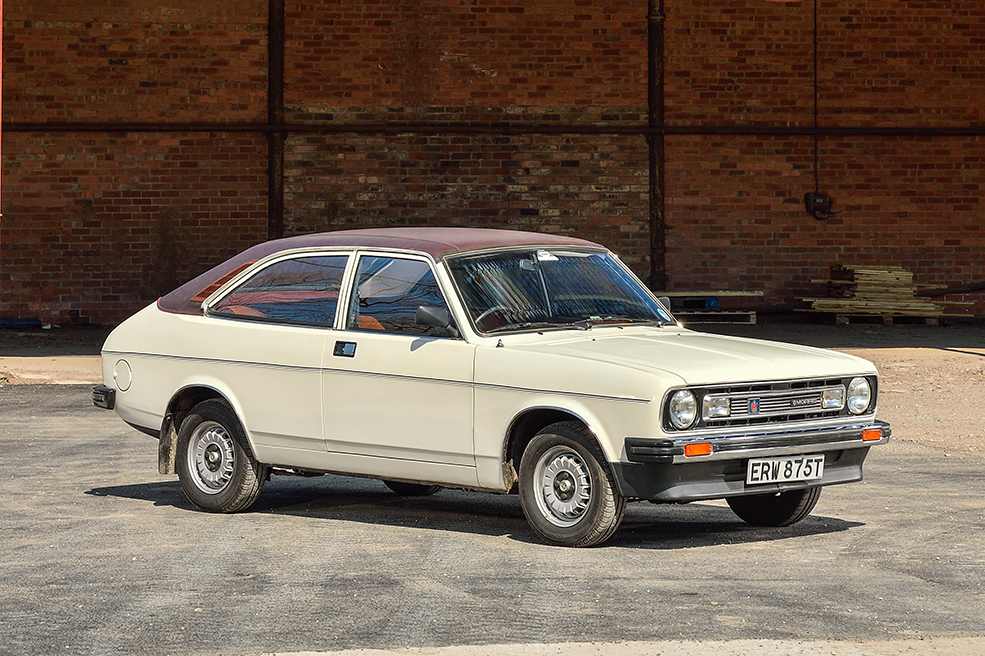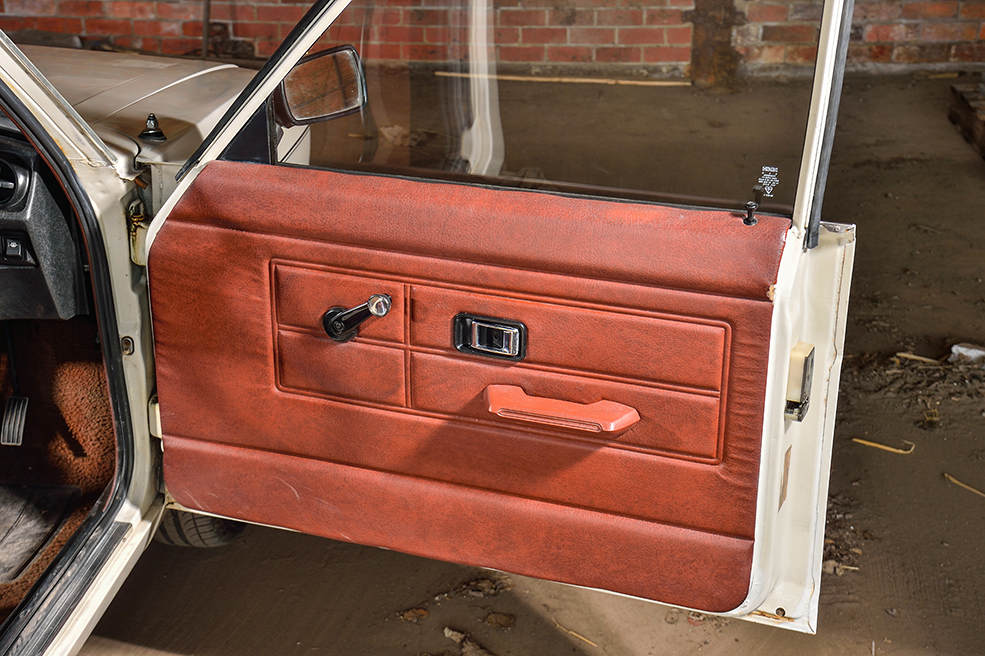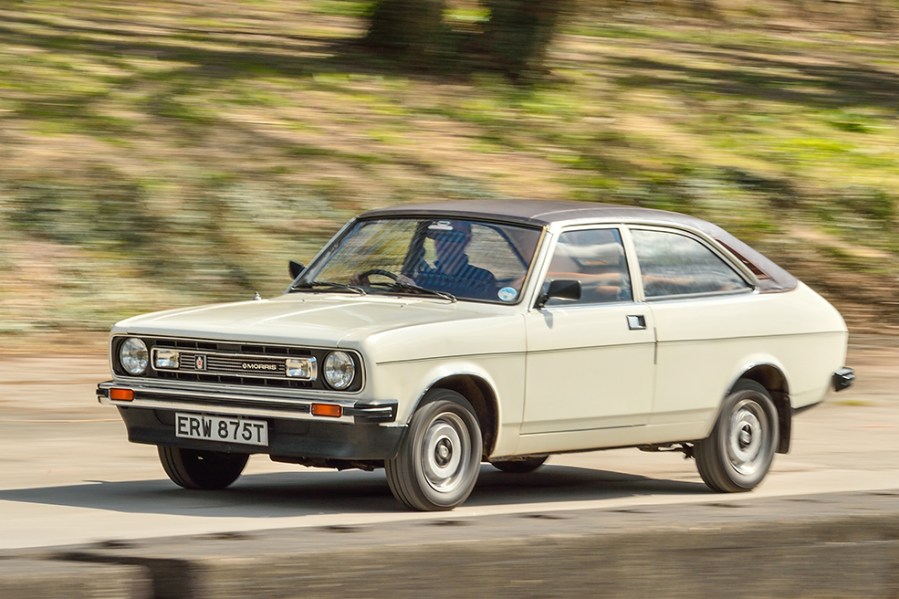Half a century after its arrival, we revisit the Morris Marina and ask whether it deserves the 50 years of jokes and falling pianos
Anyone with even a passing interest in cars will have received one of those little books at Christmas, usually titled something like 100 Worst Cars and alongside the inevitable Ford Edsel you’ll find a smattering of BL products: take your pick from Marina, Allegro and Maxi.
They’re easy targets of course for a lazy writer with a looming deadline but few really deserve the slating they receive. Indeed in the case of the Marina you’ve got to feel sorry for poor old BL, which it seems couldn’t do right for doing wrong: industry pundits criticised them for clinging to the front-drive fluid-suspended format, but when they tried to do cynically conventional, history judged them equally harshly.
Ironically, the Marina came into existence largely because of Ford’s dominance in the UK and specifically its success in the fleet market. At the time Britain was unusual in European companies for its proportion of company cars and Ford’s reliance on conventional engineering had given it a decisive advantage over BMC and later BL. The Mini-inspired Austin 1100/1300 sold well to private buyers, regularly taking the number one sales spot, but the servicing costs and fragility of the cars in high-mileage use scared off the fleet buyers.
This informed the decision as to the layout of any mid-range volume product from the BL stable, while the tight time frame was another consideration: British Leyland had been formed in 1968 and the accepted version of events is that the incoming management were horrified to discover that there were no new models in the pipeline for imminent release.

In short order an edict was issued that the corporation should have a Ford Escort challenger ready to unveil at the Earls Court show in 1970. As Technical Director, Harry Webster had his work cut out and unsurprisingly, development short cuts were welcome wherever possible.
One of these presented itself in the rather unlikely shape of the Morris Minor. Yes, it had been around since the late 1940s, but its rear-drive platform was rugged and well-proven, making it an ideal starting point. Crucially, it would also offer a car slightly larger than the Escort, allowing BL to beat Ford at its own game by offering more metal for your money.
It’s this association with the Minor which has forever damned the Morris Marina, its arch-devotee (we’ll call him Trevor) poised ready to fire a volley of angry emails every time we mention the two cars on the same page. The truth of the matter? It’s fair to say that the underbody structure of the Marina shares significant elements with the Minor but naturally, they’re not identical.
The two are however very similar, especially in the suspension department where the Morris Marina used the Minor’s layout pretty much unchanged: longitudinal torsion bars at the front with lower wishbone and lever arm damper serving as the upper link, while a pair of leaf springs held up the rear.
Clearly, development of an all-new powerplant was out of the question and the trusty A-Series was lined up for the task in 1275cc form. Amusingly, early prototypes were apparently created by welding Vauxhall Viva bodies over Morris Minor floorpans, the Frankenstein creations powered by a Cooper S-spec motor and said to drive very well.
In contrast to the oily bits, the new car’s appearance was considered critical and few were better placed to pull off the Ford trick of disguising workaday running gear with aspirational style than ex-Ford man Roy Haynes.

With the Mk2 Cortina in his back catalogue, this was a market Haynes knew well and his design for the Morris Marina made it through to production little changed from the early concepts. Impressively, it also beat off competition from prestigious international names: both Michelotti and Pininfarina supplied competing proposals.
Awkwardly, Haynes would leave BL in 1969 – after either falling out with management or not fancying a move to Birmingham, depending on which side of the story you believe – which meant that Harris Mann was promoted to Chief Stylist and tasked with completing the design details for production.
By then though, the Morris Marina had been thrown another curve ball, this time by the market researchers. It had been discovered that the greatest growth in the volume market was not in the Escort size but in the class above, the so-called 1.2 to 2-litre segment. The brief was hurriedly revised to move the Marina upmarket but fortunately Haynes’ original design had provided a suitably capacious engine bay for both the A-Series and larger engines. Initially plans surrounded the new E-Series OHC unit, but cost considerations meant the car went to market with the 1.8-litre B-Series as its larger option.
With a Triumph gearbox added to the mix – the Minor box’s non-synchro first was a step too far, even in 1971 – the car was ready for launch, with the Marina name chosen from a shortlist of four including Major, Mistral and Mirage.
The car was launched in April 1971, but not before a last-minute hiccup which is one of those ‘doh!’ moments on a par with the MGC famously being sent out on road tests with flat tyres. Both Motor and Autocar testers were so shocked by the significant understeer of the 1.8-litre models both on the press launch and in their first road tests that the staffers put aside their bitter commercial rivalry and each title sent representatives to discuss the matter with Harry Webster.

It was grudgingly admitted that the problem was recognised and that the road test cars had been pre-production examples, lacking a revised suspension mounting which had been developed to increase negative camber during cornering. The editors were assured that all production 1800 models and later all 1300 cars would use the revised set-up and a publicity disaster was avoided when both magazines were gentle in their initial appraisals.
Despite what urban myth and rumour would have you believe, early sales were good, aided by problems with the early Mk3 Cortina. By 1973 the Morris Marina even found itself in the number two sales spot and production edged encouragingly close to the ambitious 5000 per week target, although as ever the industrial relations issues rife at BL rather hampered things.
All of which rather contradicts those ‘100 world’s worst cars’ books… or does it? As launched in 1971, the Morris Marina really was a brave effort from a collection of old and frankly obsolete components and the fact that it was able to compete with the all-conquering Ford at a credible level shows the wisdom of BL’s ‘if you can’t beat ’em, join ’em’ dumbing-down strategy.
As ever though where the swirly plughole badge of doom was involved, the Marina was left to fend for itself in the marketplace with little additional investment. After all, it had only been developed as a stop-gap until an all-new mid-size model could be developed, but with the demise of the so-called SD2, that replacement wouldn’t arrive until 1982 as the Maestro/Montego.
It wasn’t entirely ignored though and in 1975 a Series 2 car was released, featuring a minor facelift inside and out, bringing with it a curious interior restyle which saw the radio facing away from the driver.
In 1978, the car finally received a more modern engine option when the B-Series was replaced by the – gasp – overhead cam O-Series. Offered in an unusual 1.7-litre format it offered 78bhp and improved refinement, although the Moggy’s lever arms remained underneath. By then, the hand-me-down suspension which had seemed like a great development short-cut were proving a handicap not only for the brochure copy writers but also for the production accountants, since the lever arm dampers were by then such a relic that tiny production volumes for MGB and Marina rendered them costly to manufacture.

Amazingly, the Morris Marina would soldier on until 1980 when it was replaced by the Ital which even then was only a mild facelift of the original and was itself a stop-gap as the Maestro crawled towards the light of day. The lever arm dampers would finally disappear in 1982, but in 1984 it was finally laid to rest. Even then though, the bones of the Marina would live on, as the Huandu CAC6430 estate car, produced until 1999.
By the time Marina-badged production had ended, a total of 1,135,343 had been produced, of which 38 per cent were even exported. Altogether then, not a bad innings for a car conceived as a hasty stop-gap, but how does the commercial success match up to the driving experience.
Finding out is harder said than done, since the Morris Marina is a rare beast today, one of those street furniture cars which nobody thought to preserve. There is however, one place you’re bound to find a car like this and that’s the brand new attraction in the peak District, The Great British Car Journey.
You’ll find more details in our side panel but one of the unique attractions is Drive Dad’s Car where visitors can actually get behind the wheel of the exhibits on a private course and one of the cars on offer is the 1979 Marina Coupe you see here.

With an early 1971 saloon also on hand courtesy of the British Motor Museum, it proved fascinating to see just how the Marina evolved over time. Or rather, how it really didn’t.
Sitting in the spring sunshine, the car looks every bit the stylish mid-market ’70s coupe and although it may be identical to the saloon from the B-pillars forwards, it’s an elegant and neatly proportioned car. It may lack the transatlantic flavour of the Capri, but makes up for that with more of a European flavour and it’s no secret that elements of the shape resurfaced in the original Hyundai Pony.
The detailing too sets this ’79 car apart from the earlier Marinas, with plastic grille, lower spoiler and bumper caps all updating the style to compete with the Fords.
Naturally the door handles are rather too familiar but it is at least a change to find a Marina door handle on a Marina for once and twisting the key results in that trademark BL starter whirr which was a staple of every suburban cul de scan back in the late ’70s.
The Great British Car Journey prides itself on having its fleet on the button and the Morris Marina fires up instantly. It’s actually a low-mileage survivor, showing just 30,000 miles in the hands of its sole owner, a Mr Fell of Coventry. A retired council official, Mr Fell received the BL ‘employee’ discount meaning that after £8 for mudflaps, and £9 for 11 gallons of fuel, the car cost him £2641.25.

It’s no surprise then that the Marina drives like a two-year old car, but what does surprise is just how pleasant it is to pilot round the mile-long course.
If you believe the urban rumours, then you’ll expect an understeering horror which disintegrates around you, but the reality is that here is a most inoffensive car which is very easy to drive.
Yes, the Minor underpinnings make themselves felt in the sometimes bouncy ride over broken surfaces, but in most other respects the Marina feels like your average 1970s family car. The switch to the Triumph box banished the Minor’s rather abrupt short-travel clutch action and provided a more positive shift, while the steering retained the Minor’s rack and pinion, meaning it’s more accurate than many of its competitors.
Being a 1300L, this Marina boasts a heady 57bhp, putting it just 3bhp shy of the contemporary 1300 Cortina, although the Morris has a 300kg weight advantage. Like the Cortina’s Kent motor, the smaller of the Marina engines is eager enough to provide performance which can certainly keep up with modern traffic and was certainly on a par with the Cortina. With B-Series power, the Marina was something of an unlikely hot rod in its range-topping 1800TC form, with a higher top speed than the MGB.
Get it up to speed though and surely you start to notice that Morris Minor heritage? Well… yes, and to be honest, no. Like so many of these things, the understeer issue has been massively exaggerated over the years and at moderate speeds you wouldn’t think to question what kind of dampers are found underneath. The A-Series is lighter than the B-Series in any case, while the suspension changes at launch did much to improve things and it’s at this point that we address a rather large elephant in the room: the marina may not have been a great car, but neither was the Cortina in absolute terms and ultimately, neither of these cars was designed to provide the last word in handling finesse.
Let’s not forget that it was the Cortina which coined the term ‘Dagenham Dustbin’ for its woeful quality and despite the strike-torn BL empire which produced it, the fit and finish of this ’79 car bears comparison with a Ford of the same age.
Interestingly, magazine road tests of the time seem to consider the Marina a worthy competitor to the Ford, often putting it in a second place but crucially, considering it way ahead of the imported rivals. By which naturally, they meant the early Japanese cars which may have come with a radio, heated rear screen and an extra door mirror but which were judged poorly on their driving dynamics.
In fact, after a few miles in the ’79s coupe, I’ve gained a fresh perspective on the Marina which may not have broken any new ground, but which was an adequate tool for the job in hand. Yes, that may be damning it with faint praise, but after sampling this one I can think of many far worse machines to fill a book of ‘all time terrible cars.’

The Great British Car Journey
It’s not often we get a brand new car-themed attraction but on May 22 the doors will open at the Great British Car Journey. Nestling next to Derbyshire’s Peak District in Ambergate, the venture is the brainchild of Richard Usher, former owner of Auto Windscreens and Blyton Park circuit and unashamed petrolhead.
Chatting to Richard when we visited before the opening, his enthusiasm is contagious and as he talks us through the cars awaiting to display, it’s obvious that each one has been hand-picked for a reason. Recognising the value of automotive nostalgia, Richard has picked not ranks of exotica but the everyday cars we all remember from our youth but which have disappeared from sight – dad’s cars, in other words.
The story began with an unusually pristine Maestro which Richard bought from a neighbour purely to satisfy his own nostalgia, the Maestro’s bonded-in screen having been an industry first and a big deal back then for someone in the windscreen business.
It was public reaction to the car which got Richard thinking and encouraged by some like-minded colleagues, the idea of a museum devoted to the story of the British car industry developed. The main hall at the former wire works will accommodate a display of no less than 125 cars, kicking off with Austin’s rescue from bankruptcy in the 1920s courtesy of the Seven, right up to the collapse of MG Rover in 2005. Along the way, the story encompasses the likes of Lotus, Ginetta, DeLorean, Jensen, Jaguar, Daimler, Rolls-Royce and Bentley, plus of course Ford and Vauxhall and even Sinclair and Gilbern. Yes, there are a few exotics in the collection but the beauty of the venture is that the story is told via the cars we all remember and can relate to.
The genius however is in the Drive Dad’s Car attraction, which for £49 gives visitors a chance to get behind the wheel of a selection of similar cars themselves around a private on-track site. Bundle deals are available offering two cars for £105 or three cars for £145 and the Marina coupe is one of them, so if you give it a try, do let us know whether you agree with our assessment that the Marina didn’t quite deserve the reputation it ended up with.
The original
Shortly after sampling the ’79 Marina, we had the chance to try a car from the other end of its long production run: a 1971 saloon, courtesy of the British Motor Museum’s collection (above).
The remarkably original one-owner car was gifted to the museum last year by its original owner and it makes a fascinating comparison with the later car – mainly because it shows how little changed the car’s basics were for so long.
The first impression from the early car is just how delicate it is, from the trim details to the slender wheels and bumpers. In comparison to the Cortina, it feels like a smaller car altogether, which of course it was and which belies its origins as an Escort competitor.
The basic vinyl-trimmed interior shows its age against the decadence of the crushed velour in the ’79 car, but the plastic dashboard moulding is very much of its time and once again, the car which springs to mind is the Escort.
If the Marina was off the pace technically by the late ’70s, this early car illustrates exactly why: the two feel largely identical to drive. That’s praise for this ’71 car although not such good news for the later cars and when compared to something like a Mk1 Escort 1300 four-door the Marina stands up well. We tend to associate the Escort with RS-badged heroes but the reality was that the big sellers were the humdrum basic models and the Marina feels like it’s cut from the same cloth, albeit with a little more interior room.















